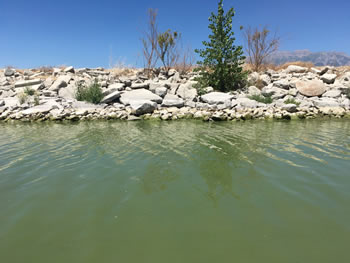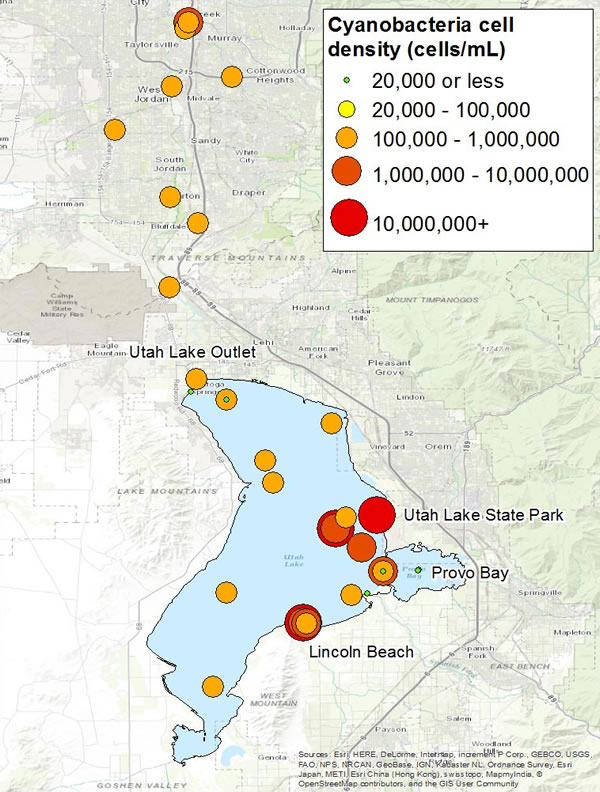News Article
July 19, 2016
Sampling Risks in Utah Lake and Tributaries

Many of you may be following the news about the harmful algal bloom on Utah Lake that started last week. Here is a link to the Utah Department of Environmental Quality (DWQ) website which has press releases and other information.
In addition to Utah Lake, harmful algae were found in the Jordan River and lower Little Cottonwood Canyon Creek. We want to caution people about potential risks of sampling in these bodies of water. Cell counts in the 20,000-100,000 are of low to moderate risk, but people should be aware that cell counts on this order of magnitude (or higher) were measured in the Jordan River and its canals over the weekend. Results are not back from sampling today, but apparently the wind shifted and the bloom is moving to the outlet of the lake (i.e. more directly into the Jordan River).
Additionally, if your work brings you into contact with people who live along or near the Jordan and lower Little Cottonwood Canyon Creek, you might warn those individuals to be careful. Not a lot is known about the toxins these algae produce, or how they are transmitted and cycled in the environment.
The Utah’s 2016 Draft Integrated Report describes a rationale for listing Utah Lake as having impaired water quality for harmful algal blooms. The Utah DWQ would appreciate public comment on this document, and the public comment period is open until August 9. Here is the part of the report relevant to Utah Lake.
In closing, please share this information through conversations, email, and social media. We encourage you to respond to the Utah DWQ’s request for comment, or even write letters to local newspapers or op-ed pieces communicating publically on the hazards that this risk poses to humans, animals, birds, and plant life.


« Back to list of all news articles


